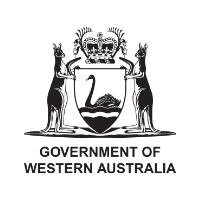Codes and Policies

Discrimination and vilification
Discrimination and vilification come in many forms. It can be overt or covert; it can be crude or subtle. It can be expressed through beliefs and stereotypes, prejudices and biases, and it occurs at many levels.
Research shows that while discrimination and vilification can contribute to weakening social cohesion, it is also linked to personal health issues for those targeted, such as depression, stress, alcohol and substance abuse and peer violence.
See a range of facts sheets which provide information and facts on discrimination and equality for the following groups:
- Aboriginal and Torres Strait Islander Peoples
- Lesbian, Gay, Bisexual, Transgender and Intersex (LGBTI)
- Multicultural
- Women and girls
- All Abilities
To help ensure sporting environments are inclusive and non-discriminatory, laws exist across Australia that makes certain forms of discrimination and harassment unlawful in all areas of life, including sport.
The NRL recognises its legislative duty of care under the relevant Federal and State Anti-Discrimination Laws (for example, the Racial Discrimination Act, Sex Discrimination Act and Disability Discrimination Act).
Please download the NRL's Anti-Discrimination and Vilification Framework via this page.
Contacts
There are a range of organisations and agencies, such as the Australian Human Rights Commission, that can provide specialist advice, support and services to help individuals and organisations resolve a complaint or deal with issues involving discrimination, harassment or vilification.
The Play by the Rules reference guide provides links to key sporting and recreation bodies, government agencies and non-government organisations, along with a short description of the support they can provide.
If you have any questions about this framework please contact: feedback@nrl.com.au
Other policies
NRL Member Protection Policy
The Member Protection Policy protects the game’s participants, administrators, coaches, officials and volunteers from harassment, discrimination, child protection issues and other inappropriate behaviour, and provides processes to deal effectively with complaints.
To view this policy, download the pdf.
NRL National Code of Conduct
The National Code of Conduct provides all participants – players, parents, coaches, referees, spectators, volunteers and officials – with some simple rules that assist in supporting a safe and positive environment to everyone involved in the game.
To view this policy, download the pdf.
Risk management for coaches and officials
Coaches and officials occupy positions requiring great expertise and knowledge – a critical part of these roles are to properly instruct, officiate, supervise and educate. Coaches must also balance the objective of winning with the inclusion and welfare of all participants.
Ground control and marshals
Ground marshals work on the front line at rugby league games dealing with crowd control and potential situations of conflict to ensure the inappropriate actions of a few don't ruin the overall sporting experience for everyone else. Just like administrators, officials and coaches, they are an essential part of making our sporting code a respectful one and to run smoothly without incident.
For information on dealing with incidents, conflict resolution advice and scenarios, visit the website.
Social media
The NRL understands the enormous value of social networking forums to promote our sport and celebrate the achievements and successes of everyone involved. However, new technologies and social networking websites have greatly increased the potential for bullying or discrimination through inappropriate and unlawful comments. The NRL will not tolerate abusive, discriminatory, intimidatory or offensive statements being made online.
To see the Social Media Policy template and videos, visit the website.

National Rugby League respects and honours the Traditional Custodians of the land and pay our respects to their Elders past, present and future. We acknowledge the stories, traditions and living cultures of Aboriginal and Torres Strait Islander peoples on the lands we meet, gather and play on.



